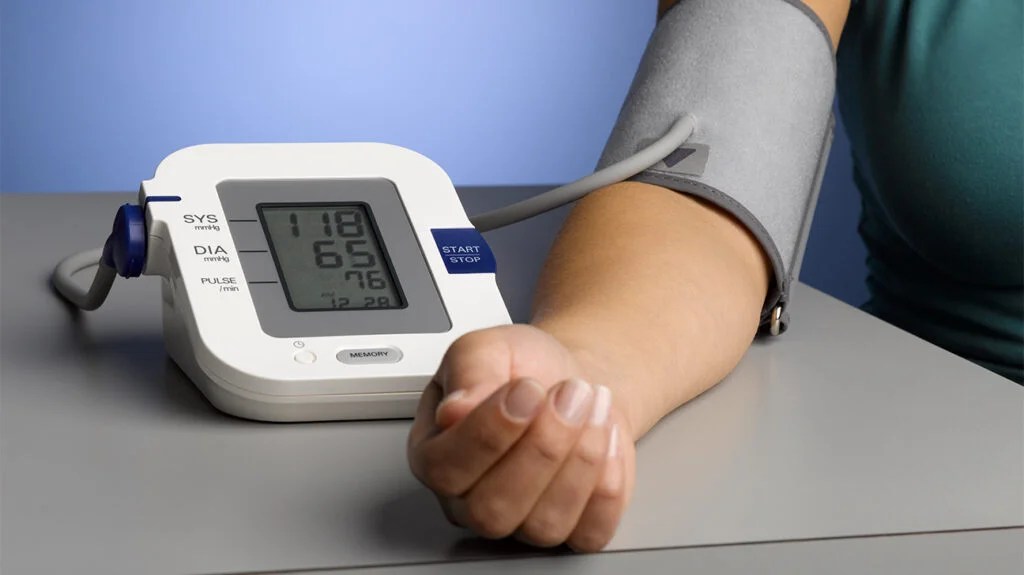 High blood pressure, or hypertension, happens when the force of blood against your artery walls is consistently too high. Over time, it can lead to serious health issues like heart disease, stroke, and kidney problems if not managed.
High blood pressure, or hypertension, happens when the force of blood against your artery walls is consistently too high. Over time, it can lead to serious health issues like heart disease, stroke, and kidney problems if not managed.Symptoms:
Most people don’t notice symptoms until the condition becomes severe, but some signs can include:
Headaches
Dizziness
Blurred vision
Chest pain or shortness of breath
Causes and Risk Factors:
Unhealthy diet (high in salt and processed foods)
Lack of physical activity
Stress
Smoking and excessive alcohol use
Family history or age
Conditions like diabetes or obesity
1. Get Moving
Exercising 30 to 60 minutes a day is an important part of healthy living. In addition to helping lower blood pressure, regular physical activity improves your mood, strength, and balance, and reduces your risk of diabetes and other types of heart disease. If you've been inactive for a while, talk to your doctor about a safe exercise routine. Start slowly, then gradually increase the pace and frequency of your workouts.
2. Follow the DASH diet
Following the Dietary Approaches to Stop Hypertension (DASH) diet can lower your blood pressure by as much as 10 mm Hg systolic. The DASH diet consists of:
Eating fruits, vegetables, and whole grains
Eating low-fat dairy products, lean meats, fish, and nuts
Eliminating foods high in saturated fat, such as processed foods, full-fat dairy products, and fatty meats
It also helps to cut down on desserts and sugary drinks, such as soda and fruit punch.
3. Put down the salt shaker
Keeping your sodium intake to a minimum can be vital for lowering blood pressure. In some people, when you consume too much sodium, your body begins to retain fluid, leading to a sharp increase in blood pressure. The AHA recommends limiting your sodium intake to between 1,500 milligrams (mg) and 2,300 mg per day. That's a little more than half a teaspoon of table salt.
4. Lose excess weight
Weight and blood pressure go hand in hand. According to the Mayo Clinic, losing just 10 pounds (4.5 kilograms) can help lower your blood pressure. It's not just the number on your scale that matters. Watching your waistline is also essential for controlling blood pressure. Extra fat around your waist, known as visceral fat, is bothersome because it tends to surround various organs in the abdomen. This can lead to serious health problems, including high blood pressure. In general, men should keep their waistline under 40 inches. Women should aim for less than 35 inches.
5. Kick Your Nicotine Addiction
Each cigarette you smoke temporarily raises your blood pressure for several minutes after you finish. If you smoke heavily, your blood pressure can remain elevated for long periods. People with high blood pressure who smoke are at greater risk of developing dangerously high blood pressure, heart attack, and stroke. Even secondhand smoke can put you at increased risk of hypertension and heart disease.
6. Avoid Alcohol
Drinking excessive amounts of alcohol can lead to many health problems, including high blood pressure. Excessive alcohol consumption can also reduce the effectiveness of certain blood pressure medications.
7. Reduce Stress
Given today's fast-paced world filled with increasing demands, it can be difficult to slow down and relax. It's important to step away from your daily responsibilities to reduce your stress. Stress can temporarily raise your blood pressure, and too much of it can keep it elevated for long periods of time.




